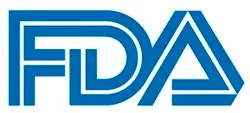Article
FDA Grants Priority Review to Lifileucel in Advanced Melanoma
Author(s):
The FDA has granted priority review to the biologics license application for the tumor infiltrating lymphocyte therapy lifileucel for the treatment of patients with advanced melanoma who progressed on or after prior anti–PD-1/PD-L1 therapy and targeted therapy.
FDA

The FDA has granted priority review to the biologics license application (BLA) for the tumor infiltrating lymphocyte (TIL) therapy lifileucel (LN-144) for the treatment of patients with advanced melanoma who progressed on or after prior anti–PD-1/PD-L1 therapy and targeted therapy.1
The BLA was supported by data from cohort 2 (n = 66) and cohort 4 (n = 87) of the phase 2 C-144-01 trial (NCT02360579). Patients from both cohorts, who had all progressed on or after immune checkpoint inhibitor therapy or targeted BRAF/MEK inhibitor therapy where appropriate, experienced an overall response rate (ORR) of 31.4% (95% CI, 24.1%-39.4%). Nine patients achieved a complete response (CR), and 39 patients had a partial response (PR).2
The median time from lifileucel infusion to best response was 1.5 months. Notably, 7 patients improved from a PR to a CR as late as 2-plus years following treatment.
“The BLA acceptance is a significant milestone in our mission to deliver lifileucel as the first individualized, one-time cell therapy for a solid tumor. The FDA’s commitment to a six-month priority review validates the unmet need and urgency for new treatment options for patients with advanced melanoma who have progressed on or after standard of care therapies,” Frederick Vogt, PhD, JD, interim president and chief executive officer of Iovance, stated in a news release.1 “I am grateful for the patients and physicians who took part in all our clinical trials, as well as the Iovance team for their outstanding work on our first BLA filing. We look forward to continuing our collaboration with the FDA during the BLA review cycle, while continuing to execute our pre-commercialization activities and advancing our robust TIL pipeline.”
C-144-01 enrolled patients at least 18 years of age with unresectable or metastatic melanoma who received at least 1 prior systemic therapy including an anti–PD-1 antibody and a BRAF inhibitor with or without a MEK inhibitor if they harbored a BRAF V600 mutation.3 Key inclusion criteria included at least 1 tumor lesion at least 1.5 cm in diameter postresection for TIL generation and at least 1 target lesion for response assessment, and an ECOG performance status of 0 or 1. There was no limit on prior therapy.
In cohorts 2 and 4, patients received nonmyeloablative lymphodepletion, followed by a single infusion of cryopreserved lifileucel and up to 6 doses of interleukin-2 (IL-2).
ORR by independent review committee assessment per RECIST v1.1 criteria served as the trial’s primary end point. Secondary end points included duration of response (DOR), progression-free survival, overall survival (OS), and safety.
Between cohorts 2 and 4 (n = 153), the median age was 56.0 years (range, 20-79). The majority of patients were male (54.2%), had an ECOG performance status of 0 (68.0%), and had cutaneous melanoma (54.2%). Additionally, 26.8% of patients had BRAF V600–mutated disease, and 47.1% had liver and/or brain lesions. Among evaluable patients, 49.7% had a PD-L1 tumor portion score of at least 1% (n = 76).
Furthermore, 71.2% of patients had baseline lesions in at least 3 anatomic sites, and 75.8% of patients had more than 3 baseline target and nontarget lesions. Lactate dehydrogenase (LDH) levels were below the upper limit of normal in 45.8% of patients.
Patients received a median of 3 (range, 1-9) prior lines of therapy, including anti–CTLA-4 inhibition (81.7%) and the combination of anti–PD-1 and anti–CTLA-4 inhibition (53.6%). Notably, 71.2% of patients had primary resistance to anti–PD-1/PD-L1 therapy, and 73.9% of patients were retreated with an immune checkpoint inhibitor.
Additional data from C-144-01 showed that the median DOR was not yet reached (NR). Responses of at least 24 months occurred in 41.7% of responders, including 47.8% and 36.0% of patients in cohorts 2 and 4, respectively.2
The median OS was NR (95% CI, 30.4-NR) in patients who experienced a response at 6 weeks. Among all patients, the median OS was 13.9 months (95% CI, 10.6-17.8).
Responses were observed in patients with checkpoint inhibitor primary–resistant disease and patients who received prior anti–CTLA-4 therapy and/or targeted therapies. Responses were reported regardless of PD-L1 status. LDH and target lesion sum of diameters were correlated with ORR (P = .008). Higher odds of response with lower tumor burden suggested the benefit of lifileucel could be maximized with early intervention after an immune checkpoint inhibitor.
Regarding safety, treatment-emergent adverse effects (TEAEs) were consistent with the underlying disease and known toxicity profiles of nonmyeloablative lymphodepletion and IL-2. Rates of TEAEs quickly fell within the first 2 weeks after lifileucel infusion.
If lifileucel is granted accelerated approval from the FDA, the ongoing phase 3 TILVANCE-301 trial (NCT05727904) could serve as the confirmatory study for full approval.1 The trial is investigating lifileucel in combination with pembrolizumab (Keytruda) vs pembrolizumab alone in patients with untreated advanced melanoma.4
References
- Iovance Biotherapeutics announces U.S. Food and Drug Administration acceptance of the biologics license application of lifileucel for the treatment of advanced melanoma. News release. Iovance Biotherapeutics. May 26, 2023. Accessed May 30, 2023. https://ir.iovance.com/news-releases/news-release-details/iovance-biotherapeutics-announces-us-food-and-drug
- Iovance Biotherapeutics announces updated clinical data for lifileucel in advanced melanoma at Society for Immunotherapy of Cancer (SITC) Annual Meeting. News release. Iovance Biotherapeutics. November 10, 2022. Accessed May 30, 2023. https://ir.iovance.com/news-releases/news-release-details/iovance-biotherapeutics-announces-updated-clinical-data-0
- Iovance investor event & KOL roundtable: Society for Immunotherapy of Cancer (SITC) Annual Meeting. Iovance Biotherapeutics. November 10, 2022. Accessed May 30, 2023. https://ir.iovance.com/static-files/b668e3af-7748-41d2-9b58-29108038a59c
- Study to investigate lifileucel regimen plus pembrolizumab compared with pembrolizumab alone in participants with untreated advanced melanoma. ClinicalTrials.gov. Updated May 26, 2023. Accessed May 30, 2023. https://clinicaltrials.gov/ct2/show/NCT05727904








